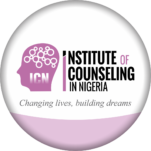Child therapy (also called child counseling) is much the same as therapy and counseling for adults: it offers them a safe space and an empathetic ear while providing tools to bring about change in thoughts, feelings, and behaviors. Just like adult clients, child clients receive emotional and goal support in their sessions. They may focus on resolving conflict, understanding their own thoughts and feelings, or on coming up with new solutions to problems. The only big difference between adult therapy and child therapy is the emphasis on breaking down mental illness, trauma , or any other difficult issue the child is dealing with, to ensure children understand what is happening and can make sense of what they are experiencing.
Child therapy can be practiced with one child, a child, and a parent or parents, or even with more than one family. It is often administered by a counselor or therapist who specializes in working with children, and who can offer the parents and/or guardians insights that may not be immediately apparent. The therapist and client(s) can cover a wide variety of issues and problems in counseling, including:
Divorce or separation
Death of a loved one
Witnessing or experiencing a trauma
Bullying
Sexual abuse
Emotional abuse
Physical abuse
Family or child relocation
Substance abuse or addiction in the family
Mental illness, like depression, anxiety, and obsessive-compulsive disorder
Whatever the treatment is sought to alleviate or address, it will likely be very forward-oriented (meaning there will be little looking back or digging up the past) and will probably be conducted in a non-verbal manner for a large portion of the time (including play, games, art, etc.).
In addition, the therapy sessions may focus on five important goals on top of any situation-specific goals:
Building the child’s self-esteem
Helping to improve the child’s communication skills
Stimulating healthy, normal development
Building an appropriate emotional repertoire
Improving the child’s emotional vocabulary.
To summarize, child therapy is quite similar to therapy for adults in terms of the purpose, goals, and problems it can address, but it narrows the focus to issues that young children struggle with and emphasizes a future-oriented perspective, along with including techniques and exercises that are appropriate for the child’s age. Are you interested in becoming a child and adolescent counselor? simply register HERE.
